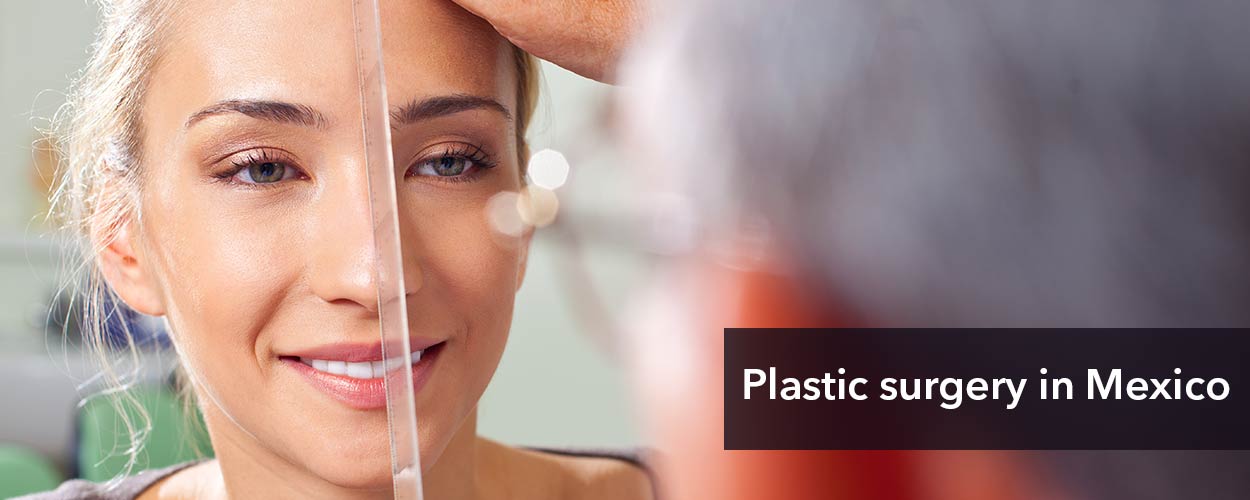Commonly performed cosmetic surgeries in Mexico:
Breast augmentation surgery:
This is one of the most commonly performed plastic surgeries. Also known as augmentation mammoplasty or boob job, it aims to increase the size, volumize, symmetry and overall appeal of the breast. As an elective surgery, it is done only for aesthetics. Patients can choose from various types of breast implants, including silicone gel-filled or saline implants, round or tear-drop.
They are also available in various shapes and textures. The incision pattern and placement of implant may have variations based on the type of implant. The potential risks of breast augmentation procedure include infection, injury to surrounding nerves and muscles, numbness, and possible leakage from the saline implants (a revision surgery will be needed). The surgery is followed by a hospital stay for 1 – 2 days. The post-operative restrictions include no heavy lifting, exercise or strenuous activity for 2-4 weeks after the procedure.
Popularly known as nose job or nose reshaping surgery, rhinoplasty is a surgical procedure which aims to improve the shape, size, and symmetry of the nose in proportion to the rest of the face. The goals of nose surgery is customized for the patients according to their expectations and reasons for having rhinoplasty. In this surgery, the nasal structures including bone, cartilage, and skin are reshaped.
It can be done to straighten the crooked nose, smoothen a bump in the bridge of the nose, refine a bulbous nasal tip, reduce the length of nose tip or to narrow a too wide nose/ nostrils in proportion to the face. A functional rhinoplasty is a procedure used to correct breathing problems caused due to obstruction of nasal passage.
It is a day procedure which can be performed with general anesthesia or local anesthesia with intravenous sedation. The nose might be placed in a splint after the procedure, to support the newly formed shape of the nose and protect it from external injury.
This is typically removed within the first week after surgery. Pain medication will be prescribed to manage any pain or discomfort during the initial recovery. Bruising and swelling generally subside within the first 10 to 14 days. Most patients resume normal non-contact activities in 3 weeks after the surgery.
Chin enhancement
Genioplasty or Chin implant surgery is a procedure to improve the contours and appearance of the chin, neck and jawline. In this operation, the surgeon places an implant around the existing chin bone to enhance the size and shape of the chin.
Chin implant aims to provide a natural and balanced look for the facial features. Most patients recover in a relatively little time after the chin augmentation surgery. There is minimal discomfort postoperatively which can be easily managed with pain medication or cold compresses.
Abdominoplasty:
It is popularly called as tummy tuck procedure. This body shaping procedure helps achieve a more toned and flatter abdomen. During the surgery, excess skin and fat is removed from the abdomen and then the wall of abdominal muscles is tightened to enhance the contours of the tummy.
A mini-tummy tuck surgery is also an option for some patients. In this procedure, the surgeon focuses on toning the lower abdomen. A hospital stay of 1-2 days is needed before to the procedure in order to prepare for the surgery and have additional tests or scans.
After the surgery, the patient may stay in the hospital for 3 to 5 days, depending on the extent of the surgery and patient’s general health. A follow-up appointment is scheduled after the discharge to remove the stitches and check on wound cleaning. The possible risks with abdominoplasty include infection, blood clots, hematoma, numbness in the area of the incision and anesthetic related risks such as allergic reaction.
Rhytidectomy
Commonly known as facelift, it is a surgical procedure to reverse the visible signs of aging by removing the excess sagging skin of and around the face and neck. In this surgery, excess loose skin and muscles are removed and the skin of the face and neck is tightened to give it a youthful look. The incision are placed in discrete areas. They must not be subjected to any excessive pressure or sudden movements after the surgery as it may damage the skin and cause poor healing and scarring.
Blepharoplasty or Eyelid surgery
This elective cosmetic surgery helps remove the signs of aging, puffiness or bags under and around the eyes. In this, excess skin and folds around the eye are removed to achieve a youthful appearance. Lower eyelid surgery is focused on removing the under eye bags or puffiness, making the eyes look wide and bright. This procedure is often combined with other cosmetic procedures such as face lift or brow lift.
Liposuction:
In this cosmetic procedure, the excess fat under the skin is removed to improve the contours of the body. Liposuction can be performed for particular parts of the body, including hips, abdomen, arms, back or face.
Most people choose this surgery to improve their figure and appearance, when the stubborn doesn’t go away with an extensive exercise and diet program. Some possible risks associated with liposuction procedure are bleeding, sagging of the skin, skin contour irregularities, fat necrosis, and scarring in areas that do not heal completely.



